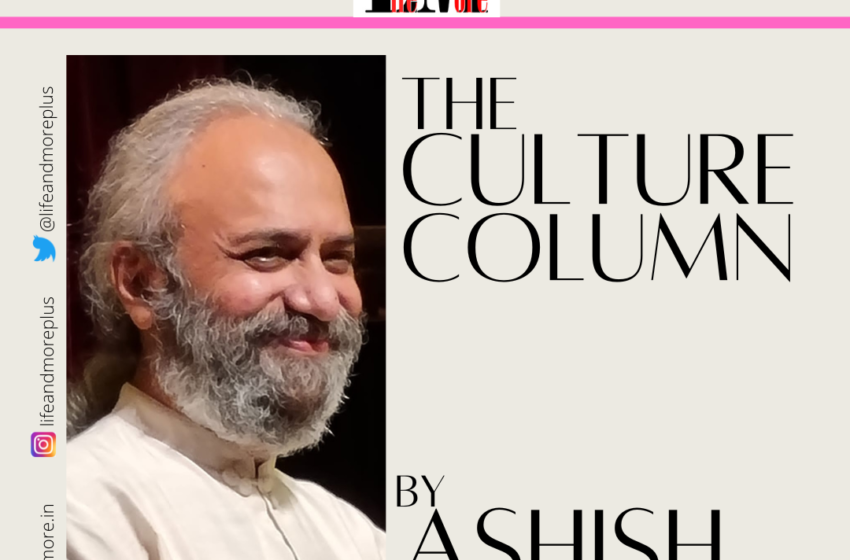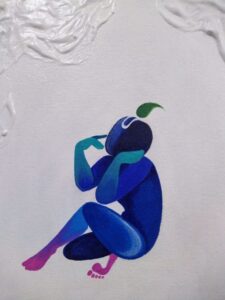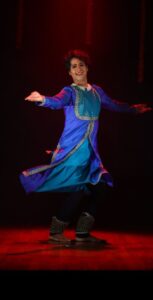CURATING CONTENT

Today in cultural field, or even in ancillary industries like hotel/ food/ fashion/ weddings the word curator or curated by is often used. The dictionary meaning says: the selection and care of objects to be shown in a museum or to form part of a collection of art, an exhibition, etc or the curation of archaeological artefacts; the selection of films, performers, events, etc.
Curators (sometimes referred to as archivists in libraries) collect, exhibit, interpret, maintain, and protect objects of historical and aesthetic importance primarily in museums, libraries, and private collections. Curators are responsible for the safety and proper presentation of the works.
Krishna wonders whither Indian culture?
So basically it means an understanding of what to put in a show, exhibition, or an event. It means core competency. It means that FIRST the person must have either the education or KNOWLEDGE or both to know. Then, select and share. Then inform and educate. Then reach out and market. Then make success or standards from and of it. Then help save it for posterity. So many levels, layers and processes.
So when one uses this word – curator – in most other fields it means what? Zilch. First of all, we Indians are very democratic with words. We often use words, senselessly. English has many words for similar sounding things. Inside and inner. Random and per chance. Fatigue and tired. But as it is not our language, we use, abuse, misuse many words. Anything goes. Even grammatically. Instead of saying May I? We say Can I? My English teacher at school (and this was a very non-fancy, non St. Anything, a neo-dehati, quasi Hindi Medium types BVB –that’s Bharatiya Vidya Bhavan in Delhi – scolded me when I asked: Can I enter (the classroom ) or can I go to the toilet? Of course you CAN (who is stopping you?) but the correct usage is: May I? You are asking for permission.
Can means you can. May means should I.
Icon is another word these days used as a noun! Everything is iconic of late. Masala dosa, car or toilet paper! Icon means someone who is a lighthouse. A benchmark. Even a landmark building. India Gate. Gateway of India. Taj. With national or international outreach. Stands out and is widely known, popular and respected. The Gandhi. Mother Teresa. Tagore. Amitabh Bachchan. Amir Khan. Dhoni. Not anyone and everything.
So, we use words freely. Forget grammar. What’s that? That teacher of mine will surely commit suicide today were she to hear the spellings today: Aasum! Pija and what not. We use words very poorly too. Especially in English. It is NOT our language, so we are mixing and matching. In vernacular we are very pucca because it is our language. Hindi or Tamil. But English ain’t. So we say choreography now for food! Gawd, what’s there to choreograph? One is just making it or decorating it or presenting it. Another word we use freely these days is: only. I am going there only! Will you be eating with us only? I hope you are reading this only!!!
So, when one is actually curating an event or a festival of art (or as I am currently doing a digital dance festival) one has to have the object and objective very clear. For example, for a major habitat institution of Delhi, one has to think what would appeal to pan global audiences? Same event in a mall will be different. Or a hall. For an institutional frame, one has to keep novelty in mind and yet stick to traditional material. Then too, diversity of forms is important, so maximum get represented. Add, a mix of old India, read EXPERIENCED and young, read ENTHUSIASTIC. Add, the median age of members of this institution and outreach to one lakh data base or fan club it has. So, CURATING an event was truly a curation and became both a challenge and fun.
Nora is all set to become a music maestro!
Challenge because there’s much choice in one form alone like Kathak or Bharatanatyam or even Bollywood. Which of 100 dancers to choose from? There exist at least 25 good groups and 50 gurus. So which one? From its region South, eyesight especially Tamil land or Telugu too, as it was once part of Madras presidency? From Maratha land which once ruled Tanjore or Gujarat, where a Maharaja of Baroda married a princess from Tanjore? What to look for or share? That’s CURATING. Not just random hodge podge of anything goes and then call it curation.
CONTENT then becomes important. How do you decide what works? Experiment of theme is language? Say, if Bharatanatyam is performed in a language that’s not its eco system then will it reach more? In Hindi or set to North Indian music? Then too, purists can debate: Should pasta taste like dhokla or dosa like pijjas?! What’s experimentation even?
Jena whirls in twirls of Kathak
Anything goes today. Fusion. Another word we use freely for food or music. Without a clue to end result. Did it even taste good? What’s good then? Who decides? When you go to buy gold you believe the jeweller or the gold mark that says 18/22/24 per cent. No one questions. It is a set norm. So, value comes from that standard. In art, who decides a painting costs ten rupees or ten lakhs? Name of the artist. Name comes from what? Work or years of work that builds a reputation that makes a brand that gets a grand (price). A dead painter is worth lots more than alive because then his or her paintings are less in circulation. It is like the diamond trade. If this cousin of coal was freely available its value will be very less.
Madhu with books at India Centre, ICCR Myanmar
A very important cultural tool that’s lost sheen or meaning is a book. No, no not Facebook but paper books. How many publishers are there in India of books on art? Not even three. One from past century, one from this. Chalo, add one from in between. Who even buys books? Ask those fools like me still bringing out a yearbook (www.attendance-india.com). Printing costs have gone up by 40 per cent in post Covid times. Postage too. Then too, artistes rarely read much, unless they are featured. Human nature. There is too much choice too. Digital world and word. One can write one’s own reviews, blogs and hog limelight. Thing is what value it has? Who puts a value to a product. Same gold story and syndrome.
Today in India, half the problem is: the product is half-baked. That’s because the process is half-made. Look at titles of performing art teachers: A cheeky, self-styled vidwan at 25! Or a guru at 30. Brahmagyani at 40! Parabrahmagyani at 50. Inflation today in arts is acute. Core competency is missing. This then shows in all we do in society.
But the other side of the fence is: Where are the jobs? Young India also needs to earn and be solvent. They have a sense of entitlement too. Swaraj is my birthright, has an altogether new meaning. Tilak? Most youngsters would search on internet and think it is what one puts on forehead! Not a social reformer or a political leader. Even there, he must be a museum piece.
Our museums are museum pieces. Mostly. Pathetic. Only new ones coming up now like MAP in Bangalore or PMs museum have big budgets to do things properly. Is it because we are a living culture and don’t care for museums? Or is it because we don’t care for history? What can best of money buy? A mall of culture not merely a hall?
Who will think of culture as an important economic sector on which the identity of country rests? Films are a big part of it. Look at how many people it employs in various departments. Music too. Architecture. Design. Clothes. Food. Arts. Habitat. One can see WHAT is not? Culture is all encompassing. About time we thought of it as so.
Ashish Khokar loves and serves Indian arts and culture selflessly, by writing, documenting, filming, archiving, celebrating and awarding. 45+books, over 5000 articles, work with 10 inter/national organisations
make his work the gold standard of the field. More details on www.attendance-india.com






3 Comments
What an enlightening article!!!
We Indians talk less about our cultural capital than our culture in the Capital.
I suppose we have a surfeit of history and culture and therefore aren’t very concerned about preserving or highlighting them but for sudden spurts of enthusiasm.
Like the author says, the economic capital that we can make of our cultural capital is something to keep in mind to boost both our culture and our economy.
To curate is to organise the right thing at the right time for people to understand restore and experience.